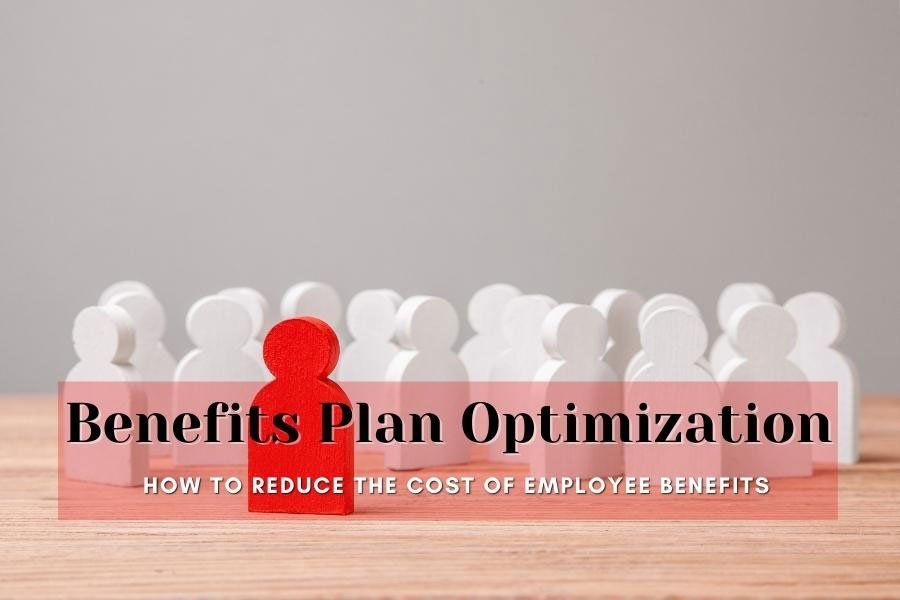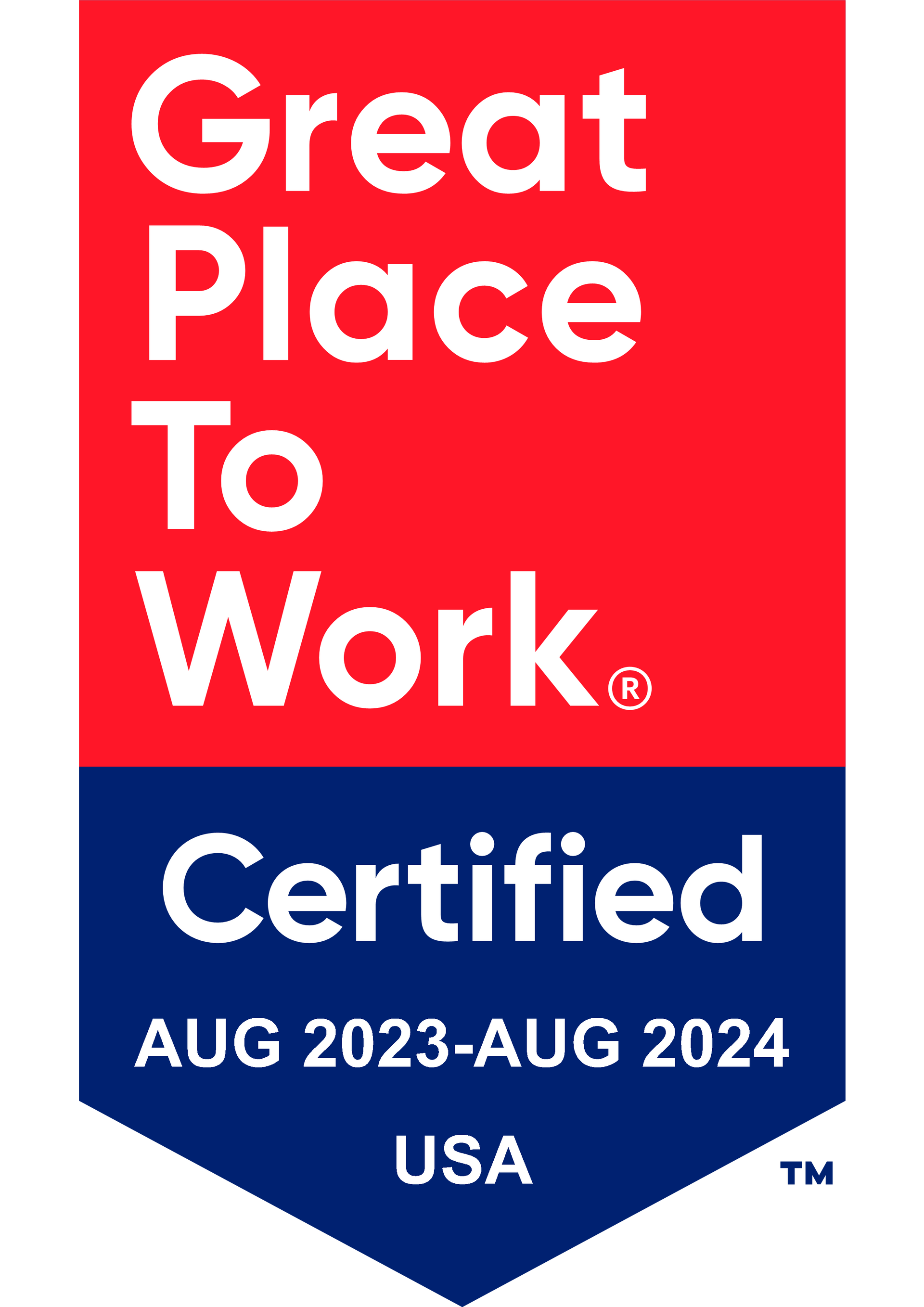Get in touch
408-366-8880
mymail@mailservice.com

How to Reduce the Cost of Employee Benefits
Now that we’ve completed our five-part blog series focused on optimizing your benefits plan, we hope you feel more informed and empowered to reduce the cost of employee benefits. Given the ever-increasing costs associated with healthcare, everyone needs to adopt the right option and develop the best strategy to save their business and employees.
According to Kimberly Amadeo of The Balance, U.S. healthcare costs totaled $3.6 trillion in 2018, making healthcare one of the nation’s largest industries. That translates to a nearly unfathomable cost of $11,172 per person that year versus the comparatively meager $147 per person in 1960.
It’s enough to make business leaders wonder how much more their employees can take when trying to manage productive and fulfilling workdays while maintaining and paying a great deal of money on good healthcare if they need it.
But fortunately, as you’ve seen in the preceding posts in our Benefits Plan Optimization series, you have plenty of options available to explore to see how well they fit your budget and employees’ and the company’s needs.
EXPLORE OUR BENEFITS PLAN OPTIMIZATION SERIES
Part One: Fully Insured Plans
Part Two: Level-Funded Plans
Part Three: Partially Self-Funded Insurance Plans
Part Four: Self-Funded Insurance Plans
Part Five: Captive and Consortium Health Plans
HOW TO REDUCE THE COST OF EMPLOYEE BENEFITS: 5 OPTIONS TO EXPLORE
Our KBI Benefits team has worked hard to come up with and share with you what we believe are the best ways to reduce your healthcare spend. Let’s take a look back at the highlights of each of these five important health plan alternatives to see which ones might best align with your corporate culture, employee needs, and your bottom line.
1. FULLY INSURED INSURANCE PLANS
In our April blog post regarding fully insured plans, we wanted to touch on this traditional model, discussing its advantages and disadvantages. It is the least self-empowering type of plan for employers who want to save their business and employees. The more autonomy you can have regarding health insurance, the more advantageous deals you can make.
With fully insured insurance agreements, you pay a premium based on the carrier’s determination, depending on several variables, including:
- Age and gender
- Health status of eligible individuals
- Location
- Tobacco use
- Individual vs. family enrollment
- Administrative costs
Ultimately, all the factors determining premium pricing are combined among the organization’s covered members to calculate an average that represents all employees. Therefore, if you have a largely healthy employee population that takes their health seriously, you might still see higher costs if a few employees are older or experience significant and costly health issues.
Regardless of how the numbers are spread across your employee population, the total figure is what you and your employees are responsible for paying each month, six months, or per year, depending on what terms you work out with your insurance carrier.
The benefits of a fully insured plan include:
- Consistent insurance rates make things more predictable and stable
- The insurance carrier manages all claims
- The insurance carrier assumes all the risk
The disadvantages of a fully insured plan include:
- Higher premiums than alternative plans, such as self-insured models
- Higher employer tax burden
- Inflexibility
If your business relies on a fully insured model, you might want to keep reading to review other models that ask you to take more risks but offer some intriguing rewards.
2. SELF-FUNDED INSURANCE PLANS
We recently discussed self-funded insurance plans as an alternative to traditional fully insured plans. One of the first things we note in self-funded, or self-insurance, plans is that they instantly require more willingness from you to take on more risk. Both you and your employees must also take on more responsibility to enjoy access to a more flexible program.
With a self-funded plan, you grow to better understand the value of any health insurance you invest in to protect your employees.
Using a self-insurance plan, each time one of your employees has a health insurance claim, they will submit the claim to your HR or benefits department, and your employer will pay for all claims out-of-pocket. Employers set up a special trust fund earmarked to pay for all claims as they are turned in.
Many employers worry about this type of plan because of the associated risk. Consider the possibility of an employee experiencing a completely unexpected health emergency that might completely overwhelm your earmarked trust fund. Such a situation could theoretically wipe out your fund and any other money and assets your organization has.
Fortunately, there is a built-in fail-safe for this catastrophic scenario called stop-loss insurance. This specialized insurance was designed to cover these situations where the risk of certain ventures is substantial and could destroy a business without a backup plan. What happens is that once your bill exceeds your agreed-upon threshold with your self-funding insurance carrier, your stop-loss insurance will kick in to pay the outstanding balance.
One overwhelmingly positive aspect of self-funded insurance is the use of a third-party administrator (TPA), which carries out standard but time-consuming processes, such as collecting premiums and claims processing.
The benefits of self-insured plans include:
- Lower fixed costs
- Fewer administrative expenses
- Quicker administrative claims processing
- Improved cash flow
- Ability to rent a network
- More control over your health plan
3. PARTIALLY SELF-FUNDED INSURANCE PLANS
Partially self-funded health plans have all the tell-tale signs of a self-insured plan, but they offer more protection against overages, limiting risk, and the need for the use of stop loss funds. These plans rely on a reinsurance carrier through an administrator working behind the scenes.
This alternative health plan has become popular among small-to-mid-sized businesses that tend to encounter less predictable claims.
Here are some additional benefits to partially self-funded insurance:
- Similar to self-insured plans, you only pay for claims as they come in, and you can rest assured that your reinsurance coverage will kick in if your claims exceed your threshold.
- Transparency and Control. By eliminating the middle man, you take greater control over your employees’ health coverage, offering the ultimate transparency.
4. LEVEL-FUNDED PLANS
A level-funded plan (LFP) offers you a unique health insurance solution that fits somewhere between a fully-insured and self-insured plan. An LFP combines the financial stability of fully-insured plans and the ability to customize and control a self-insured plan.
Similar to self-funded and partially self-funded plans, you’ll need to set aside specially marked funds to pay for all claims. You’ll pay a consistent and steady fee each month, ensuring that your health insurance plan is considered self-insurance. As noted in our previous blog post, since it is a hybridized plan that also includes some traditional small health group aspects, you’ll still create a contract with an insurance carrier while taking on more of the associated financial risks.
In this type of plan, you will pay a “level” or “fixed” fee each month to a third-party health services organization, which is frequently a health insurance carrier. These fees cover both anticipated employee claims and administration costs.
The benefits of an LFP include:
- Cost savings
- Predictable expenses
- Stop-loss coverage
- Access to your health insurance usage data to provide you with additional control to work toward future savings
- Lower tax payments
- End-of-year refunds
5. CAPTIVE AND CONSORTIUM HEALTH PLANS
Finally, captive and consortium health plans offer your business some unique savings possibilities. In these plans, a group of employers work together to jointly manage health care costs. These plans allow you to enjoy self-funded insurance without the risks.
What happens is that you’ll distribute the risks and costs among your business and the other businesses in your group, meaning that catastrophic risks are automatically lower than they would be with a fully self-insured plan or even a partially self-insured plan.
These are two distinct plans, however, so let’s take a look at both.
- A captive health plan allows the group members to own and operate their own health plan to share risk among businesses that feature a similar group size and risk profile. One of the biggest benefits of this type of plan is that owners can become a part of the plan, allowing the insureds to benefit from the insurer’s underwriting profits.
- A consortium health plan is where a group of businesses joins together to provide health insurance coverage, saving administrative costs and additional expenses spread among all the associated companies.
Both plans offer an array of possible benefits due to your focus on risk management and sharing various costs and burdens among like-minded organizations with similar interests in savings and fully insuring valued employees.
OPTIMIZE YOUR HEALTH BENEFIT PLAN AND REDUCE THE COST OF EMPLOYEE BENEFITS WITH KBI BENEFITS
We hope this series has given you a firm foundation to optimize your organization’s health benefit plan. Our goal was to share exciting new and growing opportunities to beat the high costs of health insurance by showing you that fully insured plans are no longer the standard. While they aren’t all bad, there are several other options to consider saving you and your employees' money without compromising quality healthcare.
Services
Latest Thinking




